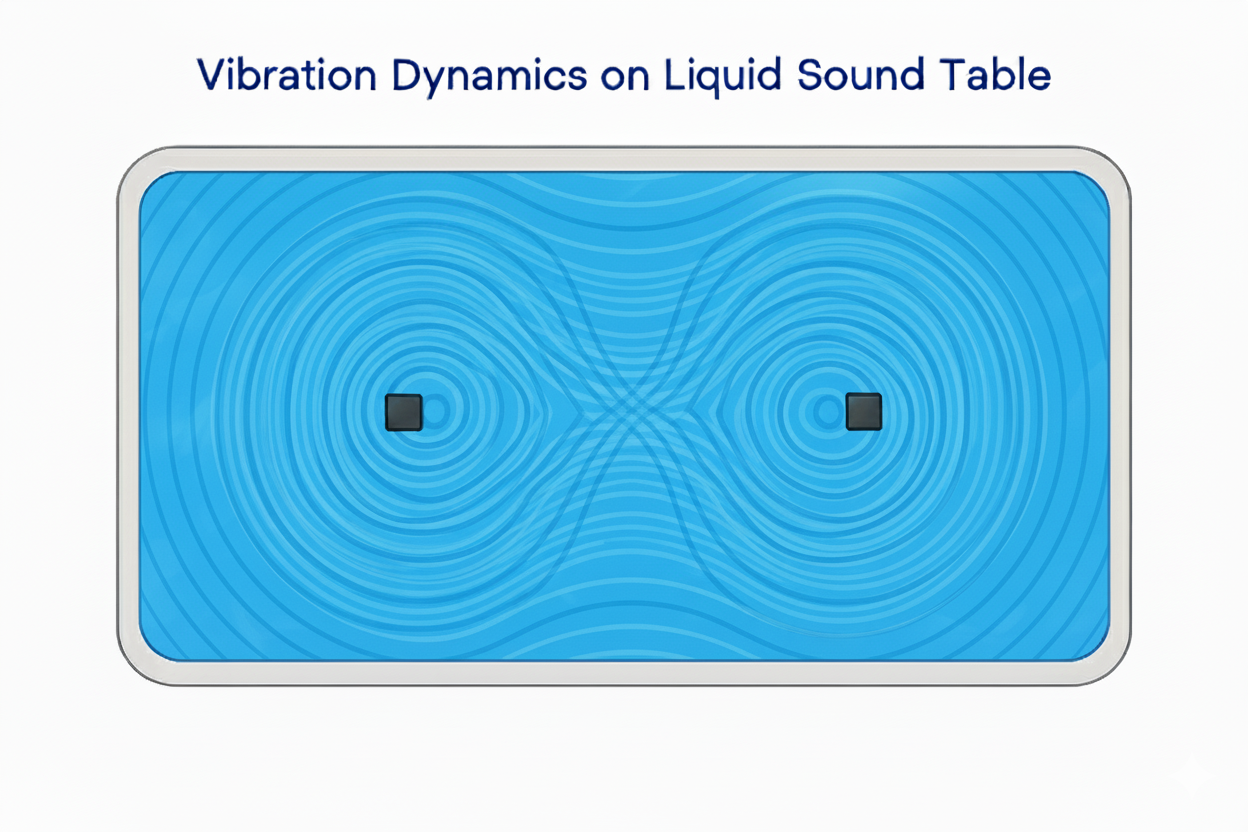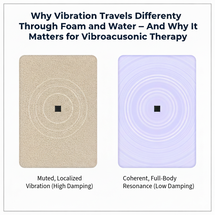Posted by Stephen Deuel with help of AI for research on 22nd Oct 2025
Why Water Transmits Vibration Better Than Foam | InnerSoulutions Liquid Sound Tables
Why Vibration Travels Differently Through Foam and Water — And Why It Matters for Vibroacoustic Therapy
For over 25 years, I’ve been designing and building vibroacoustic sound tables. Over that time, one thing has become crystal clear: not all materials transmit vibration the same way.
When you’re working with frequencies designed to relax the body, release tension, and support the nervous system, how those vibrations reach you is just as important as the frequencies themselves.
The Problem with Foam
Traditional massage tables use layers of foam designed for comfort — not for vibration. Foam absorbs and dissipates energy because it’s made of tiny air pockets. As sound waves move through foam, much of their strength is lost.
Even when the foam is compressed under body weight, it still acts as a damper. The vibration doesn’t travel far; it stays localized, fading before it ever reaches deeper tissues. That’s why, when you place a transducer under a thick foam pad, the result feels muted or uneven — the energy simply disappears into the padding instead of moving through you.
“Soft materials like foam are poor conductors of mechanical vibration due to their low density and high damping coefficient.”
— Acoustical Society of America, Journal of Sound and Vibration (Vol. 329, 2010)
Why Water is Different
Water is one of the most efficient mediums for transmitting sound and vibration. In fact, sound travels through water at roughly 1,480 meters per second, compared to only 343 m/s in air — more than four times faster.
That’s because water molecules are densely packed and cohesive, allowing vibration to move easily in all directions.
When you lie on a Liquid Sound Table, your body rests on a water bladder that naturally conforms to your shape. The water provides full contact between your body and the vibration field — no air gaps, no energy loss. The result is a smooth, even flow of sound energy through the tissues, creating a deep sense of immersion and connection.
“Sound transmission in water is highly efficient due to density and low compressibility — ideal for coupling with biological tissue, which is mostly water itself.”
— Physics of Sound, Kinsler & Frey (Wiley, 2000)
The InnerSoul Liquid Sound Experience
Our InnerSoul Tranquility Liquid Sound Table was developed precisely for this reason.
Each table uses a carefully engineered water bladder, matched to high-performance I-Beam VT200 transducers and a Crown XLS amplifier. The transducers are mounted to the wood base in sacred-geometry-informed positions, creating overlapping vibration fields that move naturally through the water — and into you.
Because your body is mostly water, this creates a direct resonance coupling unlike anything foam can offer. The result is not just vibration — it’s a full-body, deeply coherent wave experience that supports relaxation, alignment, and emotional release.

Real-World Benefits
Clients and therapists consistently describe:
-
A deeper, more even sense of vibration throughout the body
-
Faster relaxation responses — breathing slows, muscles let go
-
A floating sensation that supports emotional balance
-
Greater synergy with vibroacoustic music and low frequencies
Whether used in clinical settings, wellness studios, or personal sanctuaries, the water-based transmission system simply connects better — both physically and energetically.
At InnerSoulutions, we’ve spent decades refining this approach — combining acoustical science, craftsmanship, and intuition. The result is an instrument that lets the body truly listen.
References
-
Kinsler, L.E., & Frey, A.R. (2000). Fundamentals of Acoustics. Wiley.
-
Journal of Sound and Vibration, Acoustical Society of America, Vol. 329 (2010).
-
Duck, F.A. (1990). Physical Properties of Tissues: A Comprehensive Reference Book. Academic Press.

